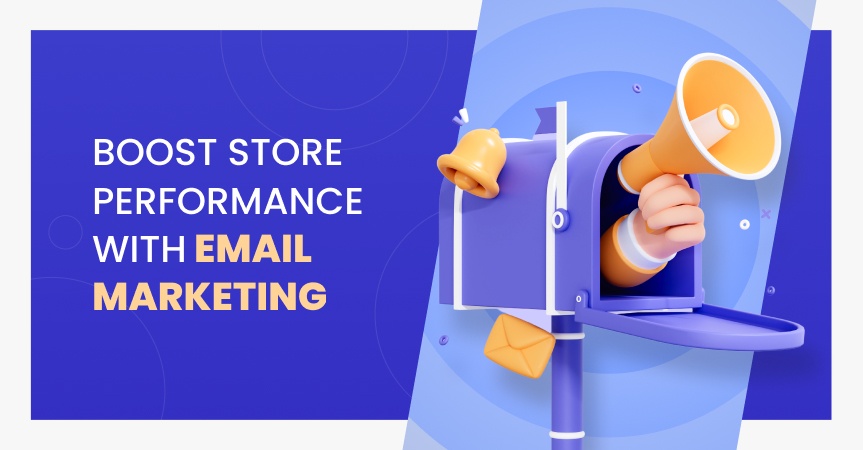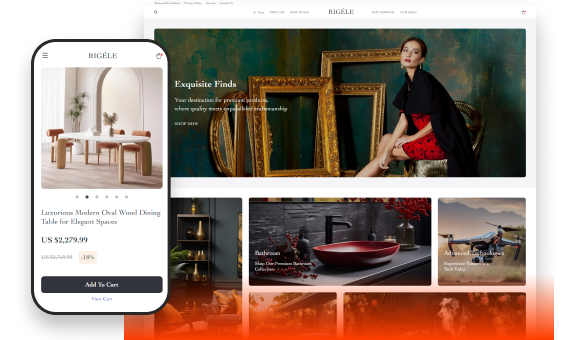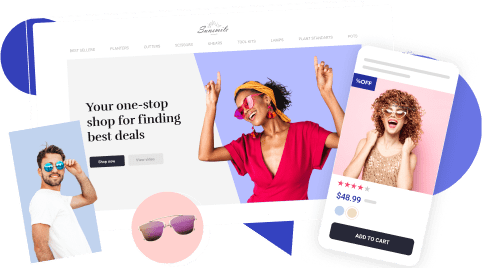‘You’ve got mail!’: How Ecommerce Email Marketing Can Boost Your Revenue

Email is the service that each and every Internet user is well familiar with. No wonder that ecommerce email marketing has become a traditional tool to increase sales. Still, many online store owners don’t know how to use it efficiently. They send letters only for rare notifications which risk getting into junk emails. Let’s figure out how you can make your email marketing really effective.
Proper email marketing strategy brings many advantages for the online stores. You can use emails not only as a tool for communication and keeping the attention of your audience, but also as the means to generate conversions and repeat sales. In this article, we’ll explain some principles of email marketing, and describe the best email marketing tools and ideas each ecommerce entrepreneur should use.
What is ecommerce email marketing?
Email marketing is the practice of sending marketing messages to potential and current customers via email in order to sell, educate, or build customer loyalty. It is a digital marketing channel – that is, the sender fully controls the content and distribution. Email marketing is best used to send personal, relevant messages to segmented lists of recipients.
In ecommerce email marketing is an especially important tool. It’s used for sending transactional, promotional, and lifecycle messages. Moreover, it’s a great way to connect with people on their mobile devices and get the most from your marketing efforts.
Ecommerce email marketing tasks
Email marketing is an essential tool that helps:
- Build and sustain proper brand image;
- Increase customer awareness about your products and services;
- Strengthen relations with the current customers and attract the new ones;
- Stimulate the buyer’s interest in a repeat transaction.
The user can immediately perform the targeted action (read, order, buy, download) by clicking the link from the letter. At the same time, the user can do it any time he wants. It makes this form of interaction both quick and convenient. Effective email marketing leads to the growth of customer loyalty.
Ways to collect email addresses
There are a lot of methods for collecting emails of your potential customers. Here are the main methods that can be easily implemented even by ecommerce beginners.
- Use pop-ups. Set them up to appear automatically on the page after a certain time, page scrolling or a specific user action. Don’t be too annoying – give your users the opportunity to close the pop-up form.
If you think that using pop-ups is a vicious taste, you just haven’t seen a nice pop-up. Look how the idea of pop-ups is executed in the famous Wait But Why blog. It proves that pop-ups can be funny and cute.
- Place the subscription form in the website footer near your contact information. Make the form easy to notice.
- Add subscription to the store news. Let your customers choose whether they want to subscribe to sales and discounts, to new articles in your blog, etc.
- Set up product notifications. If the customer leaves the page with the goods that are not available now, provide the opportunity to receive a notice when this product is back in stock. Add a ‘Notify me when this product is available’ button with a simple form containing email address. You can also add an option to notify the user when the price drops.
- Offer discounts for registered users. Give the buyer a small bonus after registration and announce it in the website header. You can make this offer limited to stimulate the fear of missing out. As a rule, it results in tons of registrations, even from those users who did not make any purchase.
- You can make registration and subscription even easier if you provide the access through social network accounts.
- Offer the user to download something – a guide, an eBook, or something else that is really valuable.
Email marketing strategy for ecommerce

Boost your sales with ecommerce email marketing
- Special occasion sales
Sales always attract lots of customers to retail stores. Use various occasions to announce a sale. They can be seasonal, holiday, thematic – there are numerous opportunities to take advantage of sales. It will be great if the design of emails and banners on the site represents the idea of the holiday.
Need more detailed guidelines on launching a sale? Check out this step-by-step guide on planning an online sale!
- Abandoned cart notifications
We have already mentioned in our blog how important it is to remind the customers about their abandoned carts. Repeated notifications increase conversion rate and help partially recover your lost revenue.
- Cross-sell and up-sell emails
These kinds of emails are sent to customers who previously bought some products. Offering additional items and sending products or categories follow-ups, you can increase the average purchase amount.
Build your brand image and strengthen customer relations
- Design and branding
If we compare form and content, the latter is more significant. But a good-looking cover enhances the chances that the content will be noticed. So, take note of how your emails look like. Add your logo to the email templates. Try to use a chosen style in all your letters.
- Email personalization
Write personalized emails. It is always pleasant to receive an email where you are addressed by your name. Pay attention to gender when offering products. Tastes differ, things happen, but you still have more chances to sell fishing rods to men and lip glosses to women.
- Powerful subject line
Actually, a subject line determines whether your email will be opened or not! It’s the first (and only) thing that your subscribers see in their inbox when they look through the incoming messages. This is why your subject line should be tempting, catchy, and intriguing enough to encourage your subscribers to click on it and read further.
Want to see great subject line examples? Check out seven types of email subject line that boost your open rate!
Use sales email marketing to attract new customers
Okay, it’s clear how to work with your actual customer base.
But how can it be possible to get NEW customers with the help of email marketing?
You can encourage your current customers to refer your online store to their friends and therefore attract new loyal customers.
Reward your referring customers by offering them a discount. It will serve you twice. First, it will attract referrals (and motivate them – if you are super generous and give them discounts as well). Second, it will stimulate the referring customers to come back to your store to reap the benefit of their well-earned discounts and make purchases.
If you follow these simple recommendations, the positive results will not be long in coming. Now your marketing costs will be partially covered by emails – your sales will start to grow at the expense of new customers, and the average check of actual ones will increase due to constant communication.
Tips for a successful ecommerce email marketing campaigns
-
Create a welcome sequence
A welcome email sequence automatically gets sent to new subscribers when they sign up. It’s a series of emails that thank people for signing up, introduces them to your business, and outlines what they can expect from your emails.
You can include links to your social media and a CTA to follow you to encourage click-through and engagement.
-
Automate emails at key touchpoints
Email automation is a lifesaver for busy ecommerce businesses. You can use your email service to send triggered emails when a customer takes (or doesn’t take) a specific action. Because it’s so timely and relevant, marketing automation scores the best conversion rate among ecommerce email marketing tactics.
For example, you can set up abandoned cart emails to go out when someone leaves your site without buying. Or you can send an automated winback email after a customer hasn’t ordered anything for a set period of time you’d expect them to. Yet another idea is to send a VIP discount as a thank you when someone goes above a certain lifetime value.
-
Choose the right email frequency
How often will you keep in touch with your customers? You ideally want to find the balance between staying fresh in their minds and not showing up too often so that it’s annoying.
You might choose to send out a weekly newsletter, or you might decide to only email your subscribers when you run promotions or launch new products. A/B testing can help you decide based on the reaction of your recipients.
These aren’t the only types of email you can send. Try experimenting by sending reviews, customer stories, or sneak peeks behind-the-scenes. Content marketing will spice up your routine emails and get more people to read them.
-
Plan ahead
Plan in advance for your ecommerce email marketing to get results. Mapping out key emails ahead of time means you won’t end up scrabbling around trying to come up with something to send each week.
It really helps to focus on seasonal events that are coming up, as well as new launches you have on the horizon so you can create campaigns for these in advance.
-
Segment your list
One of the best ecommerce practices is to segment your email marketing.
Avoid turning off customers by creating lists of subscribers based on certain actions they’ve taken (like whether they’ve bought multiple products multiple times from you) or who like certain product lines. You can then send personalized emails that cater to their specific interests and needs.
Ecommerce email marketing has proved itself to be an effective and low-cost multi task tool. When starting your own business, remember that it is useful not only for sales, but for your PR goals and brand image as well!
















